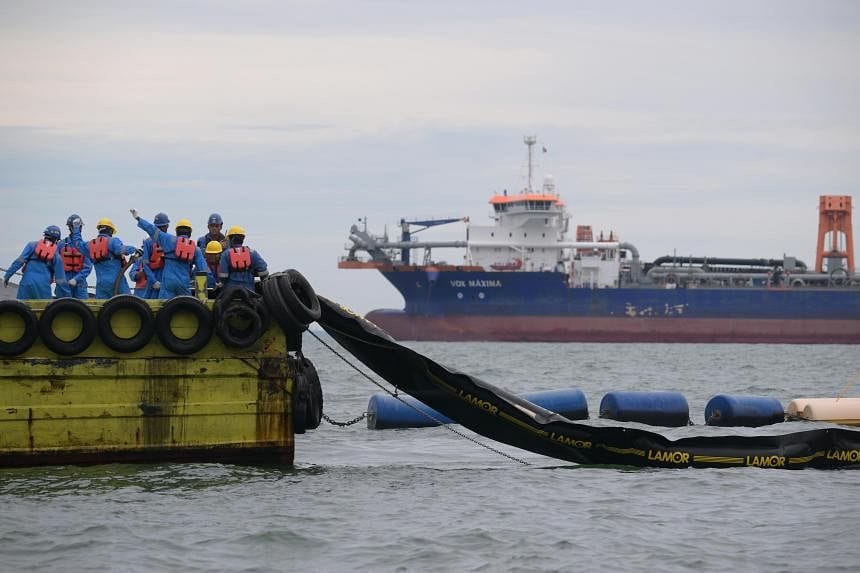S'pore oil spill: Poor weather delayed laying of booms around damaged ship, says contractor

Source: The Straits Times
Author: Therese Soh
SINGAPORE - Working in a thunderstorm at night, an oil spill recovery contractor required more than triple the time it would normally take to lay containment booms around a damaged vessel that was leaking oil into the sea. In all, it took around 10 hours or more from the time of the incident till laying that first line of defence was completed.
Laying the booms alone took three or four hours, where it would have taken one hour under better conditions, said Captain Anuj Sahai, managing director of T&T Salvage Asia.
His company was engaged by the Maritime and Port Authority of Singapore (MPA) after the Netherlands-flagged Vox Maxima reportedly lost engine and steering control and hit Singapore-flagged bunker Marine Honour at 2.18pm on June 14. About 400 tonnes of oil from the vessel leaked into the sea.
Captain Sahai said he was alerted to the incident at around 3.30pm that day.
Within half an hour, his team began mobilising three or four truckloads of gear from its warehouse in Tuas for the operation, he said.
"There was a lot of equipment and gear going out of the yard. It took about three hours to put all the gear onto the trucks and send it across to the Marina South Pier, which took another hour," said Captain Sahai.
The pier had the crane required to load the booms onto vessels that brought them to the affected site, he added.
"Once we were alongside the Marine Honour, it took about three or four hours to lay the booms because it was night-time and the weather was not so good," he said.
The crew laid 200m of booms, with each 3m section weighing more than 100kg when inflated, around the vessel anchored at Pasir Panjang Western Anchorage.
The workers' speed was impeded by strong winds and poor visibility in the heavy rain, as they had to take precautions not to fall.
Under ideal weather conditions, deploying 200m of booms takes about an hour from the time the response vessel reaches an affected site till the booms are positioned and secured, Captain Sahai said. Stronger and sturdier booms take longer to deploy, and stronger currents can slow boats and delay the process.
They finished past midnight, although he said he does not know exactly when as he was not watching the time.
T&T also laid booms at sites in Keppel Marina and Sentosa Cove on June 15, as well as an additional layer of fence booms around Marine Honour and a third line of curtain booms over the next few days.
On June 20, the authorities said that 3.4km of booms since June 14 have been deployed across affected sites to contain the spill. Besides T&T, other contractors were also engaged to deploy the booms.
MPA took reporters to observe workers from T&T lay an additional 200m of black curtain booms at Siloso Beach in Sentosa on June 21, to supplement the red fence booms installed earlier.
